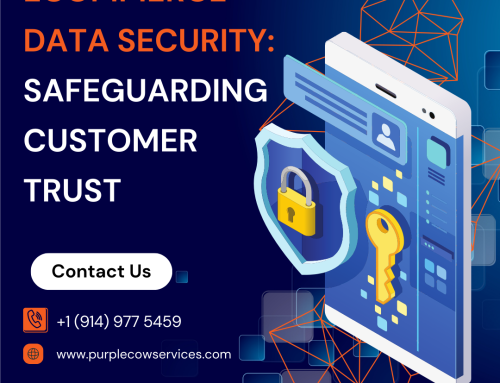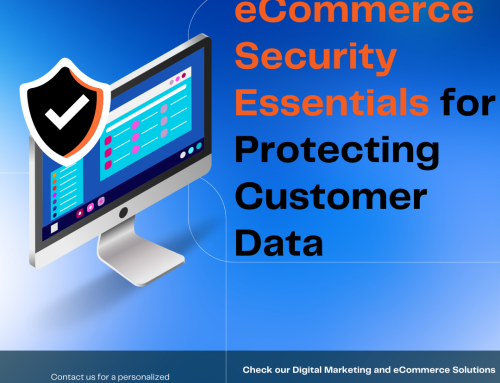In today's digital landscape, eCommerce businesses face numerous challenges when it comes to maintaining the security and stability of their online stores. With the increasing prevalence of cyber threats and the potential risks associated with data breaches, it is crucial for businesses to implement effective strategies for eCommerce store monitoring and security.
Share This Story, Choose Your Platform!
By proactively monitoring their stores and implementing robust security measures, businesses can safeguard their sensitive data, protect their customers, and maintain peace of mind. In this blog post, we will explore some key strategies that can help eCommerce businesses enhance their store monitoring and security practices.
Understanding eCommerce Store Monitoring
Before diving into the strategies, let’s first understand what eCommerce store monitoring entails:
eCommerce Store Monitoring Defined:
eCommerce store monitoring involves the continuous surveillance and analysis of various aspects of an online store to ensure its smooth operation, performance, and security. It encompasses the monitoring of website uptime, page load speed, server health, inventory management, customer experience, and more.
Importance of eCommerce Store Monitoring:
Early Issue Detection: Proactive monitoring helps identify and resolve potential issues before they escalate, minimizing downtime and customer disruptions.
Performance Optimization: Monitoring provides valuable insights into website performance, allowing businesses to optimize their store for faster page load times and improved user experience.
Security Threat Mitigation: By monitoring for suspicious activities and vulnerabilities, businesses can identify and address security threats promptly, safeguarding sensitive customer data.
Key Strategies for eCommerce Store Monitoring & Security
Now that we understand the significance of eCommerce store monitoring, let’s explore some effective strategies to enhance monitoring and security practices:
1. Implementing Real-Time Monitoring Systems
Real-time monitoring enables businesses to receive immediate alerts and notifications when issues arise, allowing for swift action. Some key aspects to consider in real-time monitoring include:
Website Uptime Monitoring: Utilize tools that continuously monitor website availability and promptly notify you of any downtime.
Performance Monitoring: Monitor page load times, server response times, and overall website performance to ensure optimal user experience.
Error Tracking: Implement error tracking systems to identify and resolve issues that may affect the functionality of your eCommerce store.
Security Monitoring: Deploy security monitoring tools to detect potential threats, such as unauthorized access attempts or suspicious activities.
2. Conducting Regular Security Audits
Regular security audits are essential to evaluate the effectiveness of your eCommerce store’s security measures. Consider the following steps for conducting a comprehensive security audit:
Vulnerability Assessments: Identify potential vulnerabilities in your eCommerce store’s infrastructure, including outdated software, weak passwords, or misconfigurations.
Penetration Testing: Conduct simulated attacks to test the strength of your store’s defenses and identify areas for improvement.
Payment Card Industry Data Security Standard (PCI DSS) Compliance: Ensure compliance with PCI DSS requirements if you process payment card information.
Data Encryption: Implement encryption protocols to protect sensitive customer data during transmission and storage.
3. Utilizing Website Performance Monitoring Tools
Optimizing website performance is crucial for eCommerce success. Consider the following strategies to monitor and improve performance:
Page Load Speed Monitoring: Utilize tools to monitor page load times and identify areas for improvement.
Content Delivery Network (CDN) Integration: Implement a CDN to distribute website content across multiple servers, reducing load times and improving performance.
Caching: Implement caching mechanisms to store frequently accessed data, reducing server load and improving response times.
Mobile Optimization: Monitor and optimize your
3. Utilizing Website Performance Monitoring Tools
Mobile Optimization: Monitor and optimize your eCommerce store for mobile devices to ensure a seamless user experience across all devices.
A/B Testing: Conduct A/B tests to analyze the impact of different design and performance elements on user engagement and conversion rates.
Analytics Integration: Integrate web analytics tools to gather data on user behavior, traffic sources, and conversion rates, enabling you to make data-driven decisions for performance improvements.
4. Implementing Robust Security Measures
Protecting your eCommerce store from cyber threats is paramount. Consider the following security measures:
Secure Socket Layer (SSL) Certificate: Install an SSL certificate to enable secure data transmission between your store and customers, encrypting sensitive information.
Two-Factor Authentication (2FA): Implement 2FA to add an extra layer of security by requiring users to provide an additional authentication method during login.
Regular Password Updates: Enforce password policies that require users to update their passwords periodically to prevent unauthorized access.
Web Application Firewalls (WAF): Deploy WAF solutions to filter out malicious traffic, protect against common attacks, and safeguard your eCommerce store from potential vulnerabilities.
5. Educating and Training Staff
Ensuring that your staff is well-informed and trained in security best practices is essential. Consider the following steps:
Security Awareness Training: Conduct regular training sessions to educate your staff on common security threats, phishing attacks, and safe online practices.
Role-Based Access Control (RBAC): Implement RBAC policies to restrict access to sensitive areas of your eCommerce store based on job roles and responsibilities.
Incident Response Plan: Develop an incident response plan outlining steps to be taken in the event of a security breach, ensuring a prompt and effective response.
Conclusion:
In the ever-evolving digital landscape, eCommerce store monitoring and security should be a top priority for businesses. By implementing effective strategies such as real-time monitoring, regular security audits, performance optimization, robust security measures, and staff education, businesses can proactively protect their sensitive data, ensure smooth operations, and maintain peace of mind. Remember, investing in store monitoring and security is an investment in the long-term success and reputation of your eCommerce business.
Implement these strategies today to safeguard your eCommerce store and provide a secure and seamless shopping experience for your customers.
Boost your eCommerce store’s security and performance with Purple Cow’s cutting-edge store monitoring and security solutions. Stay one step ahead of cyber threats, ensure smooth operations, and gain peace of mind. Our comprehensive strategies, real-time monitoring systems, and robust security measures will safeguard your sensitive data and provide an exceptional shopping experience for your customers. Take control of your eCommerce store’s security with Purple Cow today!
Share This Story, Choose Your Platform!
In This Blog:

















